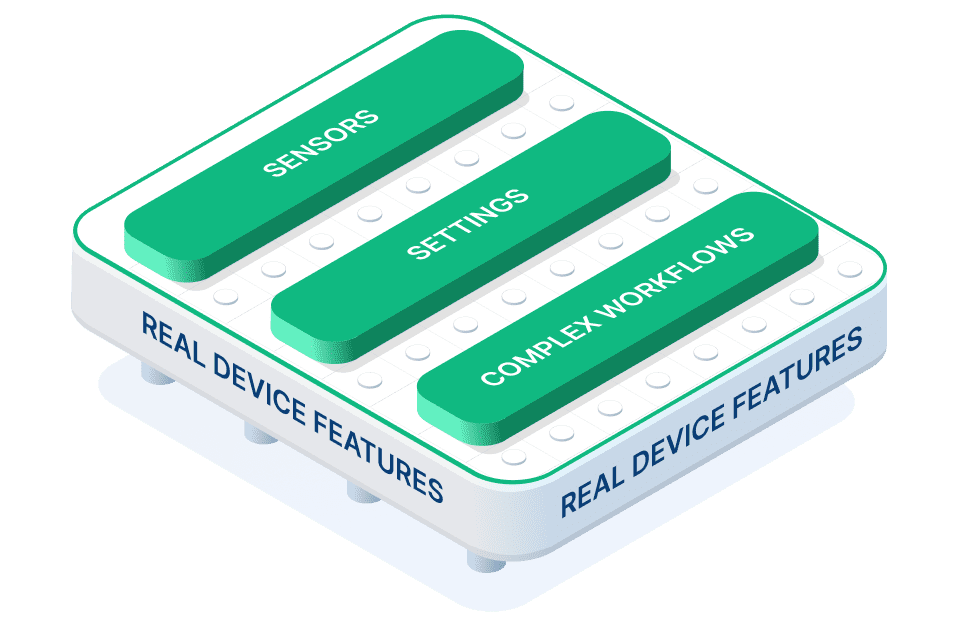In today’s fiercely competitive mobile app landscape, standing out is essential for success. With countless companies transitioning their business applications to mobile platforms and over 2 million apps available in both Apple’s App Store and Google’s Play Store, the competition is intense. PocketGamer reports that the App Store receives an average of around 2,000 submissions per day. In such a crowded market, quality is paramount. Statista’s report indicates that smartphone subscriptions have surpassed 6 billion and are projected to soar to approximately 7.69 billion by 2027. With this rapid expansion, the mobile app industry is soaring to new heights, striving to deliver exceptional user experiences and fulfill user expectations.
To distinguish itself, an app must undergo meticulous design and testing processes to ensure it meets the highest standards of performance, usability, and reliability. Only by delivering top-notch quality can an app hope to capture users’ attention and thrive in this competitive environment. The key to addressing the challenge lies in efficient mobile app testing, supported by appropriate mobile testing tools and well-defined testing strategies to ensure effectiveness and reliability. This blog explores ten practical tips to enhance the effectiveness of real device testing, covering aspects such as test coverage, Real device selection, automation, and performance optimization. By implementing these strategies, mobile development teams can identify and address potential issues early in the development cycle, resulting in higher-quality apps and increased user satisfaction.
10 Tips for Testing Mobile Apps
1. Selecting the appropriate platform for your app—be it native, web-based, or a hybrid blend—dictates a tailored testing approach. Native apps afford greater control over user experience, yet demand extensive testing across diverse hardware and OS. Meanwhile, web-based app testing poses its own challenges, from addressing various browsers to ensuring compatibility with different screen sizes in the age of responsive design. Whichever platform you target, having the relevant testing expertise within your team is indispensable.
2. Understanding your end users is paramount for crafting a successful mobile app. Analyzing user data facilitates informed business decisions, support policy definition, development prioritization, and user experience refinement. Collaboration with the development team to integrate analytical mechanisms into the app is essential. End-user data measurement is crucial not only for identifying pertinent test strategies but also for shaping future business decisions.
3. Prioritizing functionality ensures the core features of your app are robust. Users seek apps to fulfill specific functions; incomplete or inadequate functionality leads to abandonment. Therefore, it’s imperative to fully implement and test the main functions before proceeding.
4. User experience is pivotal for mobile apps, necessitating accessibility and sleek design. Addressing usability issues and ensuring intuitive functionality are imperative. Evaluating user experience early in the development cycle—starting with prototype or design mock-up testing—optimizes user satisfaction.
5. Emotional engagement is key to user retention. Building hooks and strategies to encourage app reengagement is crucial. Testing emotional engagement with a representative group of end users outside the development team ensures user-centric app design.
6. Balancing scripted and exploratory testing maximizes coverage. While scripted testing addresses functional aspects, session-based testing is adept at identifying user experience issues and edge cases. Striking the right balance ensures comprehensive coverage.
7. Defining a support policy streamlines testing efforts. It’s impractical to test every combination of browsers, platforms, and Real devices, necessitating a defined support policy focused on the most relevant combinations.
8. Utilizing cloud-based Real device management platforms facilitates testing on a wide range of devices. While emulators suffice during development, testing on real devices is essential for comprehensive testing. Cloud-based solutions offer convenient access to diverse Real devices and platform versions.
9. Employing specific test types like alpha/beta testing, A/B testing, and optimization testing refines and optimizes mobile apps. These tests inform decisions on UI and functionality changes, ensuring user satisfaction and app success.
10. Performance testing is often overlooked but crucial for identifying performance issues across different scenarios. Testing on real devices simulates real-world conditions, highlighting how the app performs under varying signal strengths, multitasking scenarios, and network conditions. Comprehensive performance testing ensures app reliability and user satisfaction.
Key Mobile App Testing Challenges
Real Device and OS Fragmentation
The mobile app market is vast and fragmented, with over 5 billion global users and thousands of Real device types across numerous manufacturers and OS versions. This diversity significantly increases the need for extensive test coverage. To ensure exceptional customer experiences, thorough software testing, including manual and automated testing, is essential.
Location and Connectivity Dependence
Mobile apps often utilize unique Real device features such as GPS, Bluetooth, NFC, and Wi-Fi, adding layers of technical complexity. Integrating these features with IoT real devices, payments, and location-based services requires comprehensive testing to validate app functionality in real-world environments.
Performance Constraints
Mobile Real devices have limited battery life and processing power, making app speed, efficiency, and stability critical. Testing should focus on verifying load times, benchmarking frame rates, stress testing under extreme workloads, and monitoring battery/network/CPU usage to ensure optimal performance.
Frequent Releases
With the adoption of agile methodologies, mobile app development teams release updates frequently. However, this rapid release cycle poses challenges for extensive regression testing. Implementing mobile test automation and effective test data management is crucial for re-running key test cases against new versions and ensuring efficient testing processes.
Security Risks
Mobile apps often request various permissions, raising concerns about data security and privacy. Given the diverse user base and real device types, mobile apps are prime targets for hackers and malware creators. Comprehensive security testing is essential to identify and mitigate potential vulnerabilities, protecting user data and ensuring app security.
Conclusion
Mobile app testing is a complex process that requires thorough consideration of real device fragmentation, location dependence, performance constraints, frequent releases, and security risks. By addressing these challenges through comprehensive testing methodologies, including manual testing and test automation, developers can deliver high-quality mobile applications that meet user expectations. With the mobile app market continually evolving, it’s crucial for development teams to stay vigilant and proactive in identifying and mitigating potential issues to ensure the security, stability, and performance of their apps in a highly competitive landscape.







